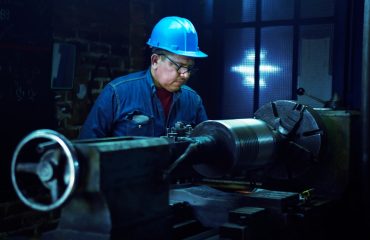Steel, the backbone of modern infrastructure and countless industries, doesn’t simply appear. Its creation hinges on a complex process reliant on various raw materials, each playing a crucial role in determining the final product’s quality and properties. This comprehensive guide delves into the diverse sources of these essential components, exploring their extraction, processing, and significance in steel production.
1. Iron Ore: The Foundation of Steelmaking
Iron ore, the primary raw material in steelmaking, is a naturally occurring rock or mineral containing iron oxides. Hematite (Fe₂O₃) and magnetite (Fe₃O₄) are the most commercially important forms, offering high iron content. The extraction process typically involves open-pit mining or underground mining, depending on the ore deposit’s geological characteristics. After extraction, the ore undergoes crushing, grinding, and beneficiation processes to remove impurities and increase the iron content. The quality of iron ore, measured by its iron content and impurities like silica, alumina, and phosphorus, significantly impacts the final steel quality and the efficiency of the steelmaking process. Different grades of iron ore are used depending on the desired steel type and the steelmaking process employed. Major iron ore producing countries include Australia, Brazil, China, India, and Russia, contributing significantly to the global steel supply chain.
2. Scrap Metal: A Sustainable Steelmaking Ingredient
Scrap metal, encompassing steel and iron from various sources, plays a vital role in sustainable steel production. This recycled material encompasses a wide range of sources, including obsolete scrap (end-of-life products), industrial scrap (production waste), and prompt scrap (new steel production cuttings). The use of scrap metal reduces the need for virgin iron ore, saving energy and minimizing environmental impact. Scrap metal is processed through shredding, sorting, and cleaning to remove non-metallic impurities before being introduced into the steelmaking process. The quality and type of scrap metal influence the steel’s properties, and careful selection is critical for achieving desired results. The increasing emphasis on sustainable practices has led to a significant rise in the use of scrap metal in steel production, making it a crucial component of modern steelmaking.
3. Direct Reduced Iron (DRI): An Alternative to Blast Furnaces
Direct Reduced Iron (DRI), also known as sponge iron, offers an alternative route to producing iron for steelmaking. Unlike the traditional blast furnace method, DRI bypasses the smelting process by directly reducing iron ore using natural gas or coal as a reducing agent. This process takes place at high temperatures but lower than those in a blast furnace, resulting in a porous, sponge-like iron product. DRI offers several advantages, including lower energy consumption, reduced greenhouse gas emissions, and the ability to utilize lower-grade iron ores. Furthermore, DRI is often used in electric arc furnaces (EAFs), which are more environmentally friendly than traditional blast furnaces. The growing adoption of DRI reflects a shift toward more sustainable and efficient steelmaking practices.
4. Other Additives: Fine-Tuning Steel Properties
Beyond the primary raw materials, various additives play crucial roles in controlling the final steel’s properties. These include alloying elements such as manganese, chromium, nickel, molybdenum, and vanadium. These elements are added in precise amounts to enhance the steel’s strength, hardness, corrosion resistance, and other desirable characteristics. The specific alloying elements used depend on the intended application of the steel. For example, stainless steel requires significant amounts of chromium and nickel to provide corrosion resistance. The precise control of these additives is essential for achieving the desired steel grade and ensuring consistent quality.
5. Fluxing Materials: Refining the Steelmaking Process
Fluxing materials are essential in steelmaking to remove impurities from the molten metal and help to control the slag composition. Common fluxing materials include limestone, dolomite, and silica. These materials react with impurities in the iron ore or scrap metal, forming a slag layer that floats on top of the molten steel and can be easily removed. The careful selection and control of fluxing materials are vital for maintaining the desired chemical composition of the steel and ensuring a smooth and efficient steelmaking process. The type and amount of fluxing material used depend on the type of steel being produced and the specific impurities present in the raw materials.
The sourcing and processing of these raw materials are critical to the overall efficiency and environmental impact of steel production. Continued research and innovation are focusing on finding more sustainable and efficient methods of extracting and processing these materials, ensuring a secure and environmentally responsible supply chain for this vital industrial metal.
SEO-Friendly Tags:
- Steel Raw Materials
- Iron Ore Production
- Scrap Metal Recycling
- Direct Reduced Iron (DRI)
- Steelmaking Process



